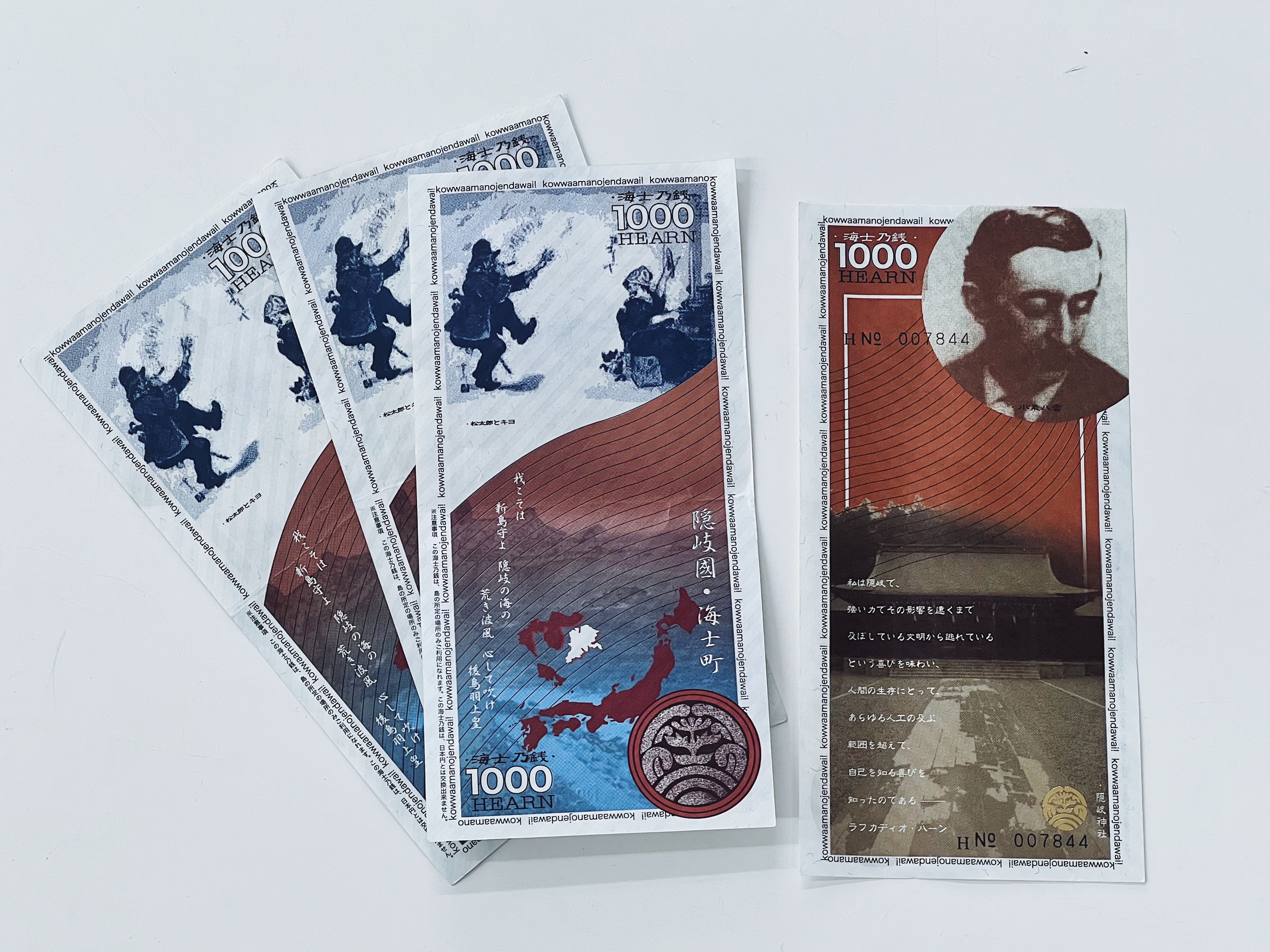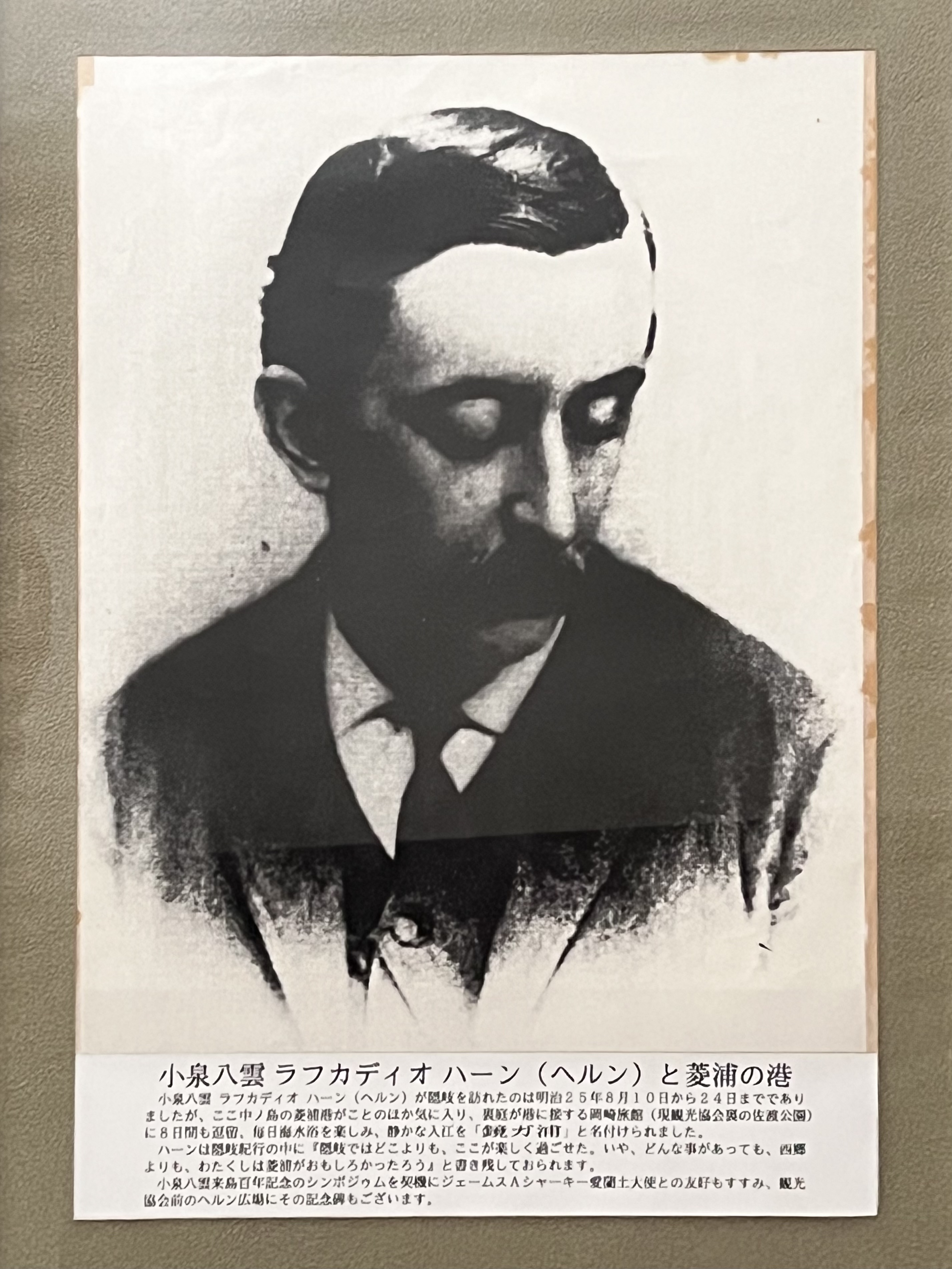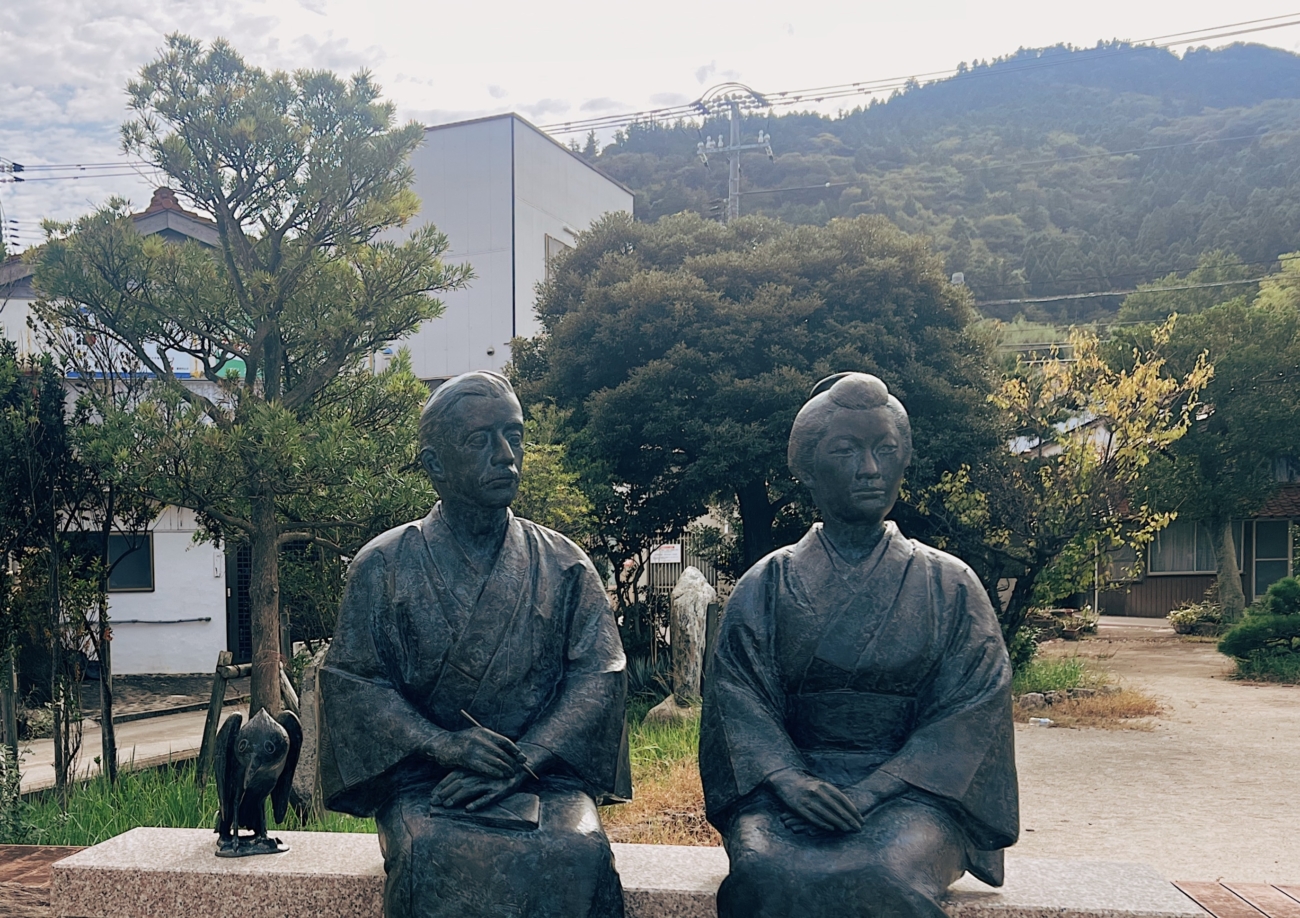Learn more about Hearn
Hearn, a world-renowned writer who wrote many books about Japanese culture and folklore, lived in Japan for 14 years and had a strong connection with Shimane Prefecture, Matsue City, where he got married to his wife, Setsu Koizumi, and became a Japanese citizen. In one of his well-known books “Glimpses of Unfamiliar Japan Vol.2,” he even wrote a chapter named “From Hōki to Oki” in which he introduces his journey from present-day Kurayoshi City, Tottori Prefecture, to the Oki Islands. The chapter starts with a chaotic yet interesting steamboat ride to Dōgō Island and ends with him expressing his love for the islands and how they make him feel like nowhere else he has ever been to in Japan. “The full joy of escape from the far-reaching influences of high-pressure civilization,”(Hearn, 1894) the kindness and honesty of the local people, and the delight of knowing one’s self while he was in the Dōzen Islands, “well beyond the range of everything artificial in human existence” (Hearn, 1894) are some of the aspects of his trip he enjoyed.

Because of such connections, in Ama Town, there is a currency that can only be used on the island called Hearn (ハーン), which was named after him. If you ever visit Ama Town and receive a “not typical-looking” banknote with an unfamiliar man’s face on it, now you know who he is and his story!
A little more on his writing journey

Hearn was strongly interested in Japanese folklore and wrote numerous books about ghosts and supernatural monsters in Japan. Although he never mastered his Japanese, he coined an interlanguage referred to as ‘Hearn-san Kotoba’ (the name that those close to him came up with for his unique way of communicating, which means “Mr. Hearn’s language”) and was able to communicate with his wife, Setsu Koizumi, who taught him many Japanese stories and tales, which he later on interpreted and published them to the world. His best-known books of ghost stories are “Kwaidan” and “In Ghostly Japan.” Although he had a great interest in the supernatural and spiritual genre, having lived in Japan for 14 years and in many cities (Kobe, Kumamoto, Matsue, and Tokyo) until his death, he has also written many great books about the everyday Japanese life and culture, such as “Japan – An Attempt At Interpretation” and “Kokoro: Hint and Echoes of Japanese Inner Life.”
If you are interested in these genres of books, we recommend reading some! His work is regarded as also having historical value. His accounts of Japan in the late 1800s will give you a unique perspective of unseen Japan, which we might not be able to get a glimpse of anymore. You might discover why he is considered such an important writer, even to this day.

